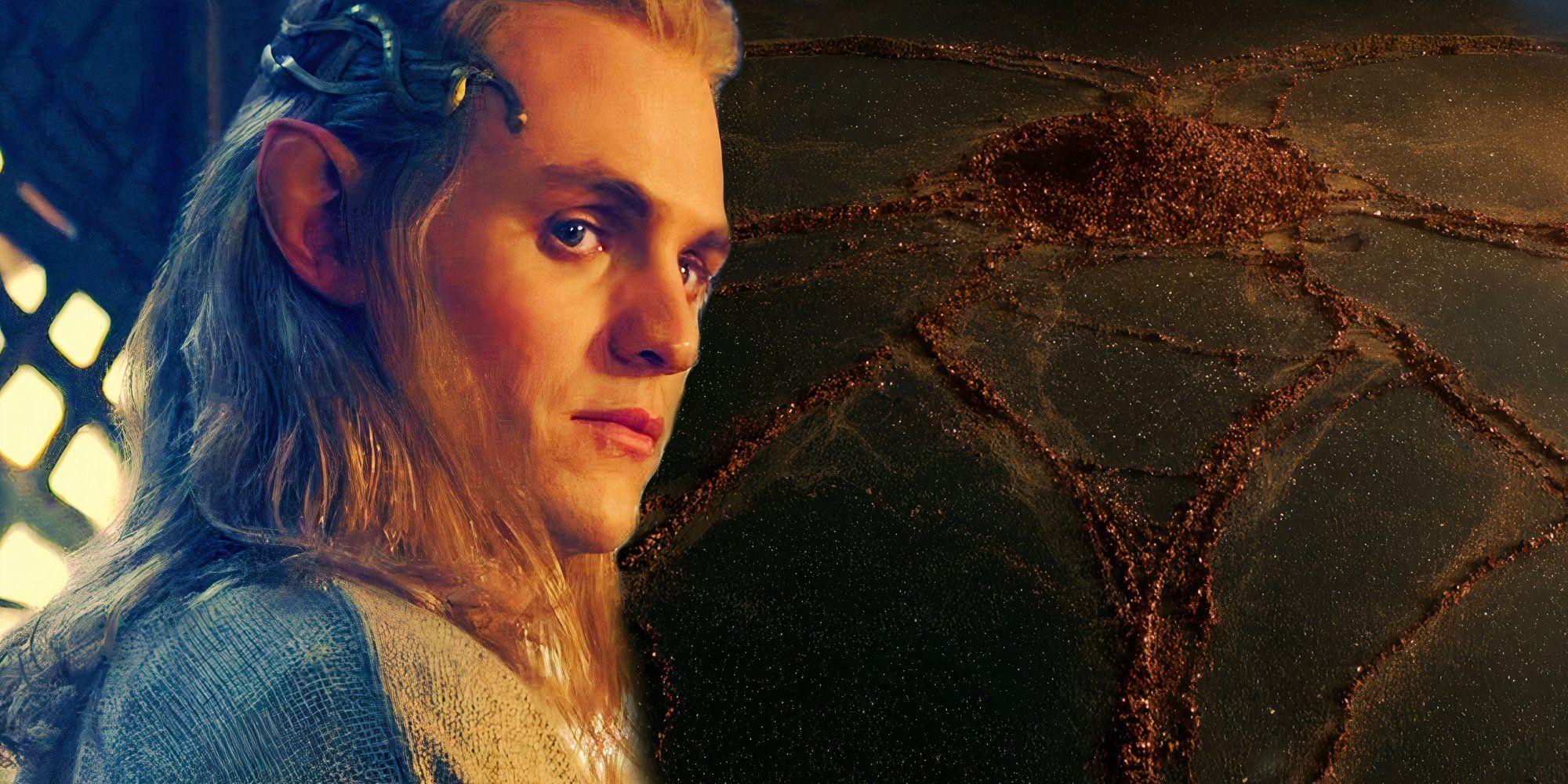
The title sequence in Rings of Power was created by Mark Bashore and Katrina Crawford, who were tasked with creating breathtaking visuals to go with the new original song by famed Lord of the Rings composer Howard Shore. The pair shared how they wanted to bring Tolkien’s Music of the Ainur to the screen, with sand shifting as it would when moved by sound vibrations (cymatics). In Rings of Power season 1, gold sand formed shapes that told stories of the First Age of Middle-earth. However, season 2’s imagery explores a different tale.
The Rings Of Power Season 2’s Red Opening Titles Symbolize Bloodshed
There Is Fresh Blood Spilled In Middle-earth In Season 2
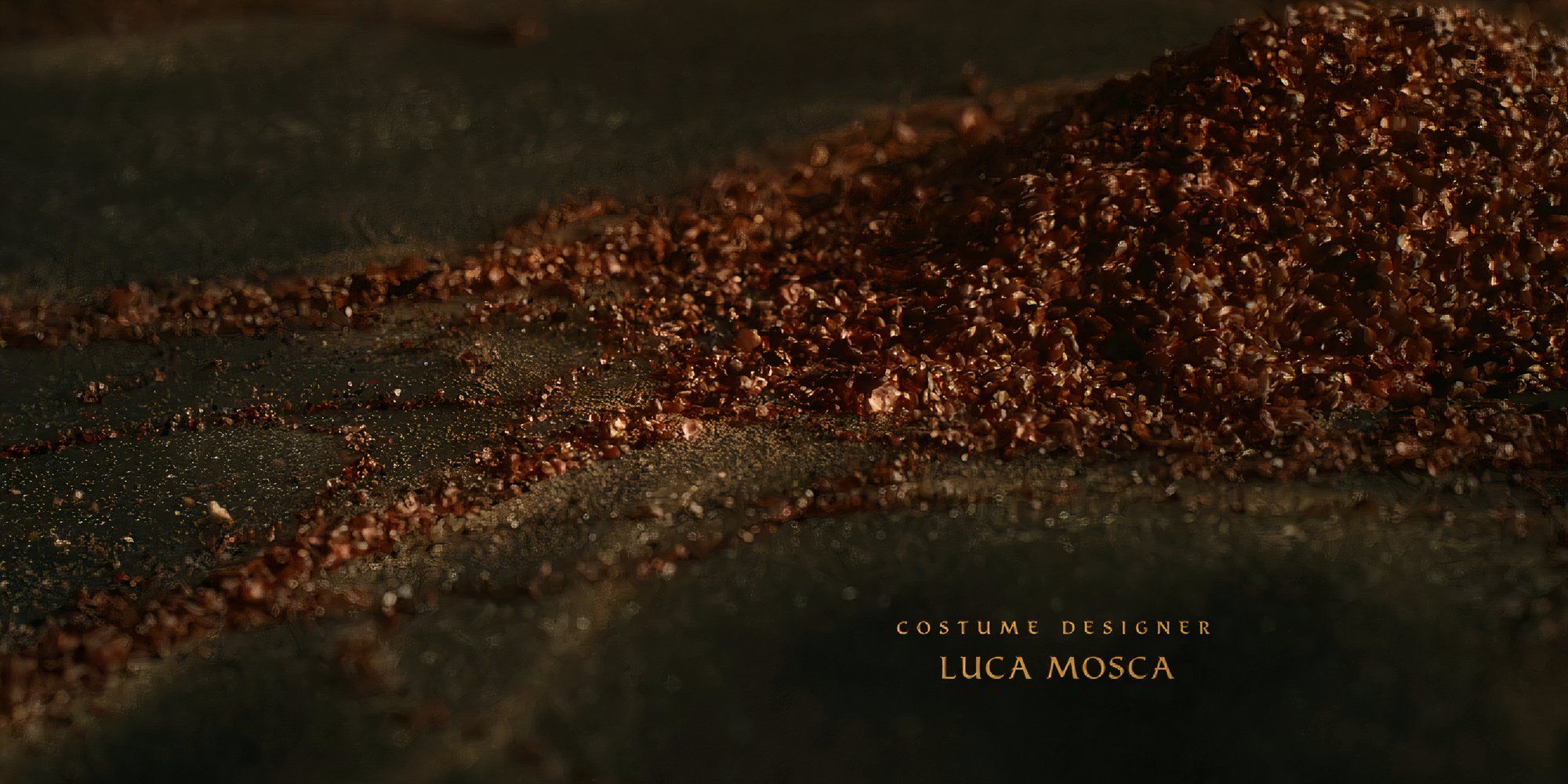
The first main difference in Rings of Power season 2’s title sequence is the color of the sand. Rather than gold, the sand is red, likely symbolizing the bloodshed and significant shift after Rings of Power season 1’s ending. The last the characters of the Second Age were seen, they had gone through a horrible battle, which led to the devastating eruption of Mount Doom and the birth of Mordor. This marked the end of the rare period of peace Middle-earth saw between Morgoth’s downfall and Sauron’s rise—and the beginning of even further bloodshed.
The flowing red sand of episode 2 (and beyond) is remniscent of the Dark Lord’s blood, further representing all that Sauron has poured into his effort for what he believes would be a better Middle-earth.
It’s also important to note that The Rings of Power season 2, episode 1, didn’t feature the show’s memorable title sequence. Instead, the new season opened on a scene in which one of Sauron’s past forms (played by Jack Lowden) is stabbed to death by Adar and his orcs. Sauron’s blood runs into the earth before it begins to reform into a black being—Sauron’s essence—that eventually takes a new form. The flowing red sand of episode 2 (and beyond) is remniscent of the Dark Lord’s blood, further representing all that Sauron has poured into his effort for what he believes would be a better Middle-earth.
What The Shapes In The Rings Of Power Season 2’s Opening Credits Could Mean
Season 2’s Opening Sequence May Foreshadow Coming Events
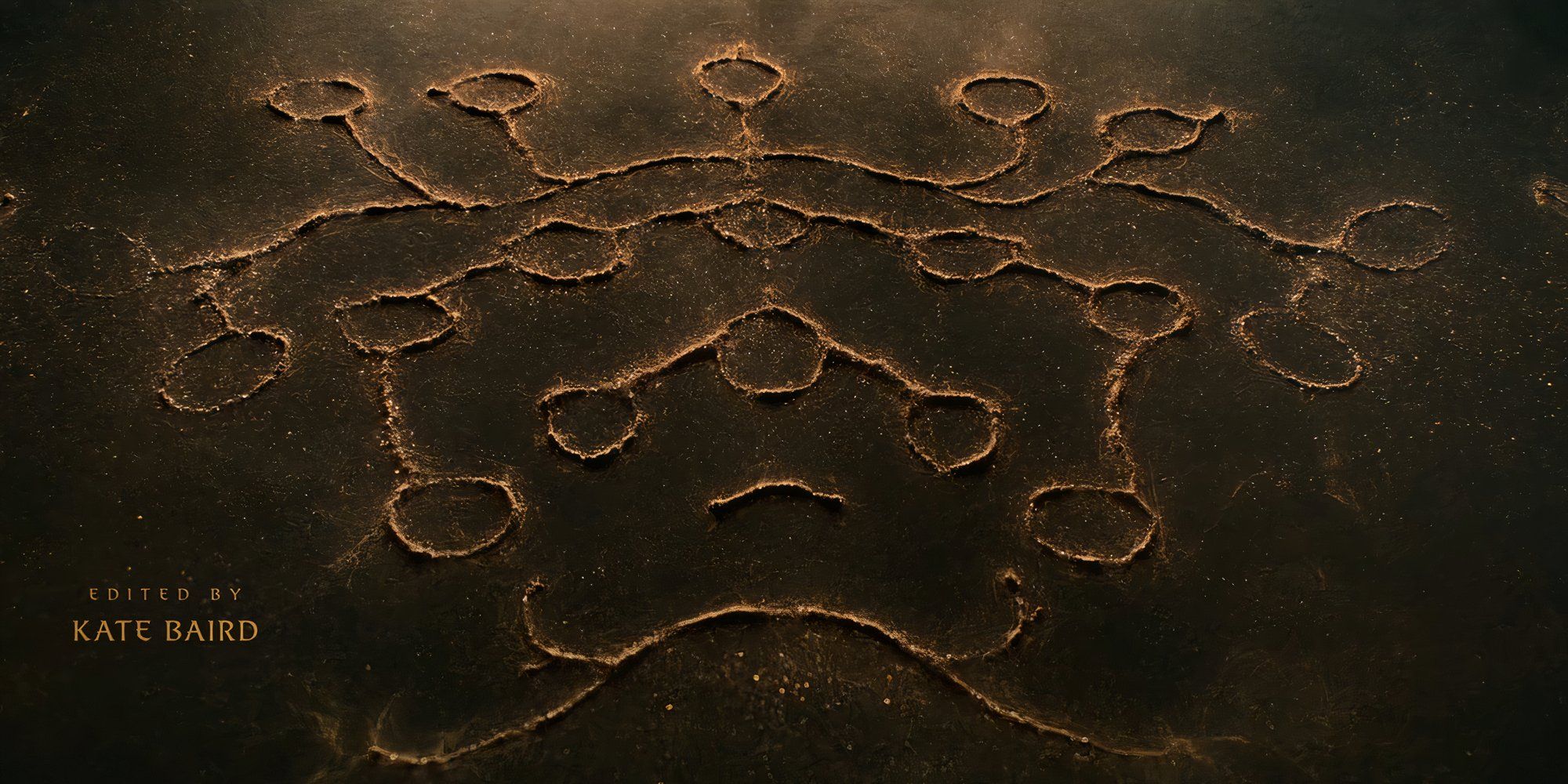
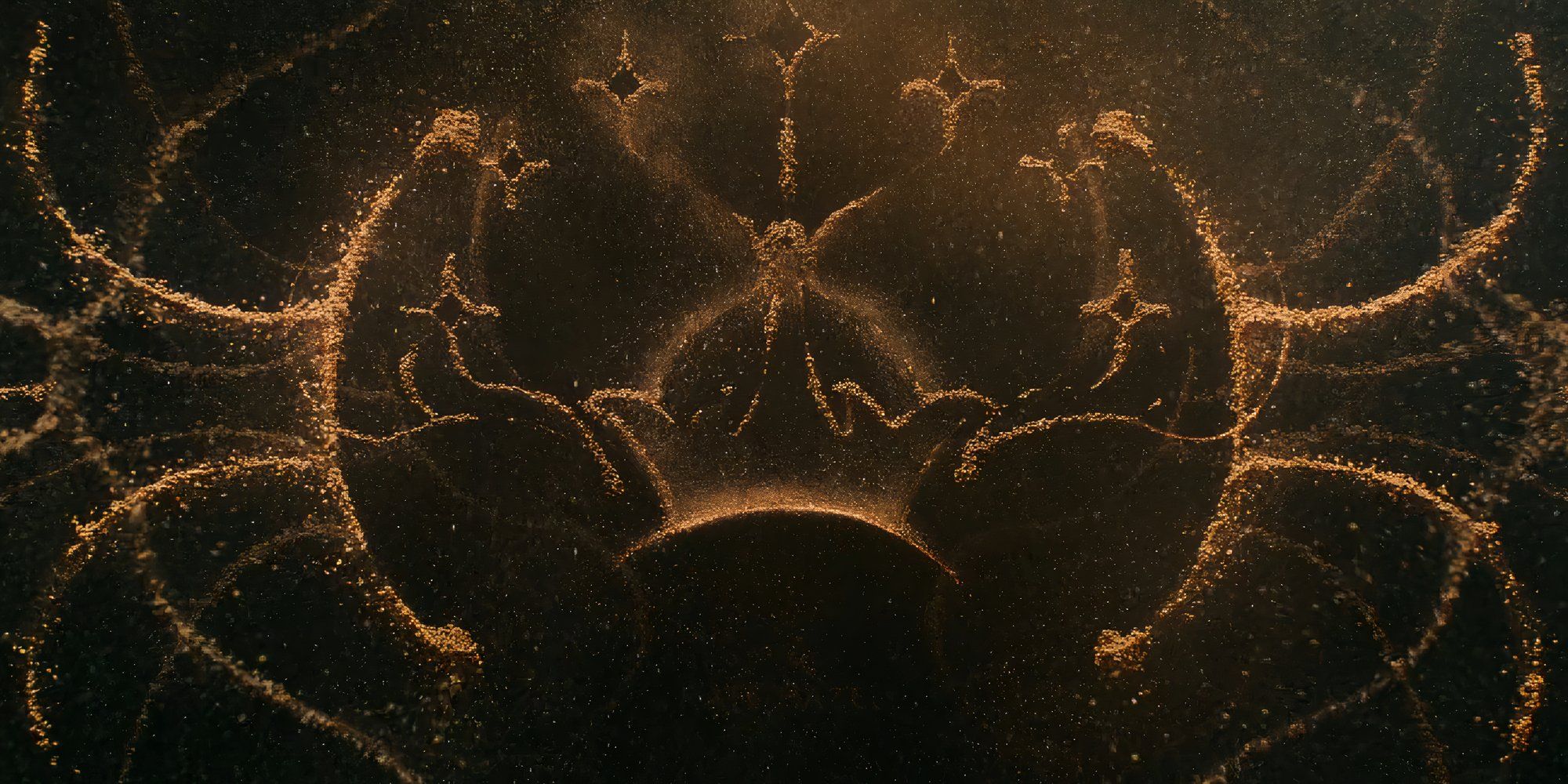
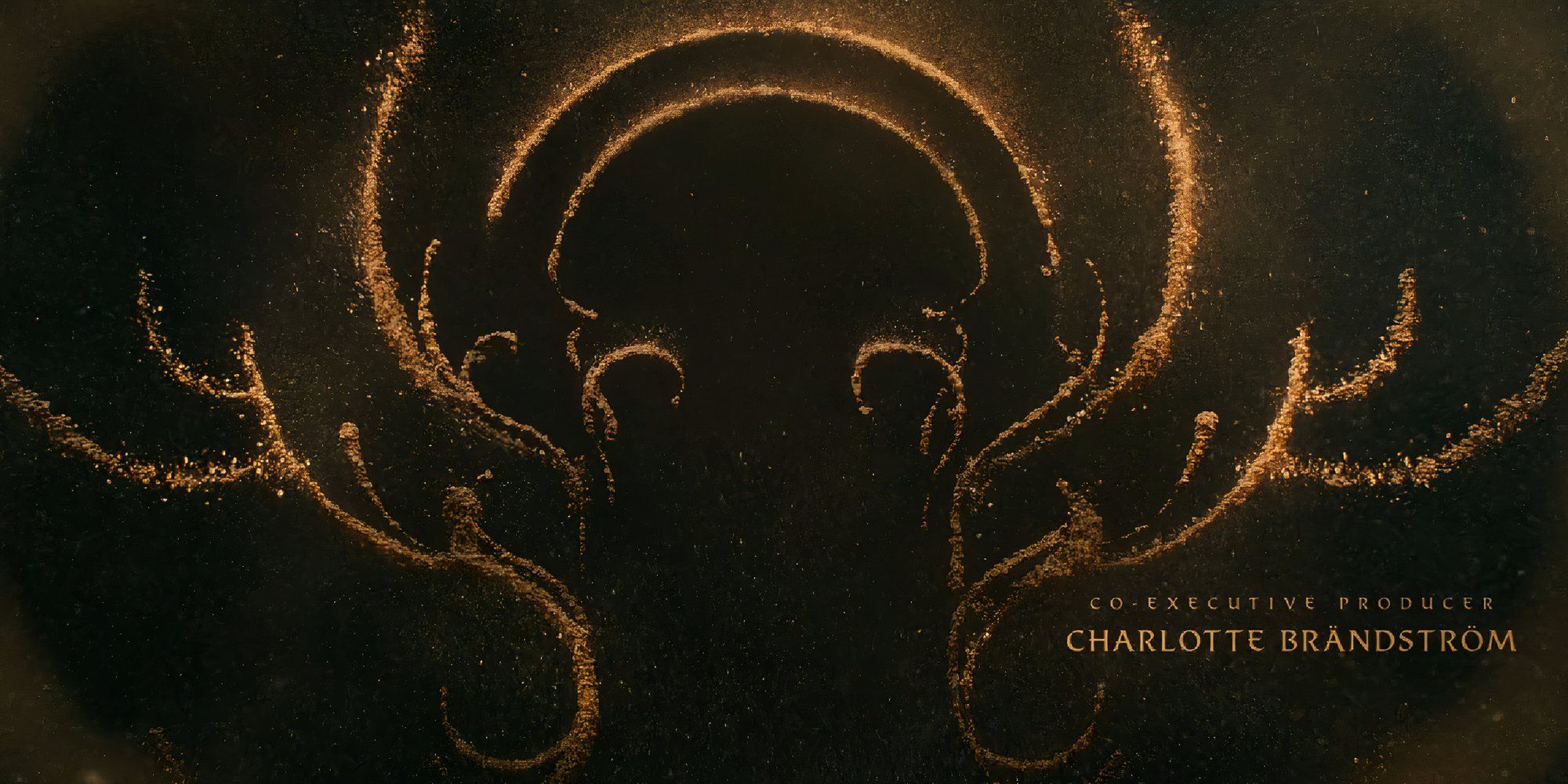
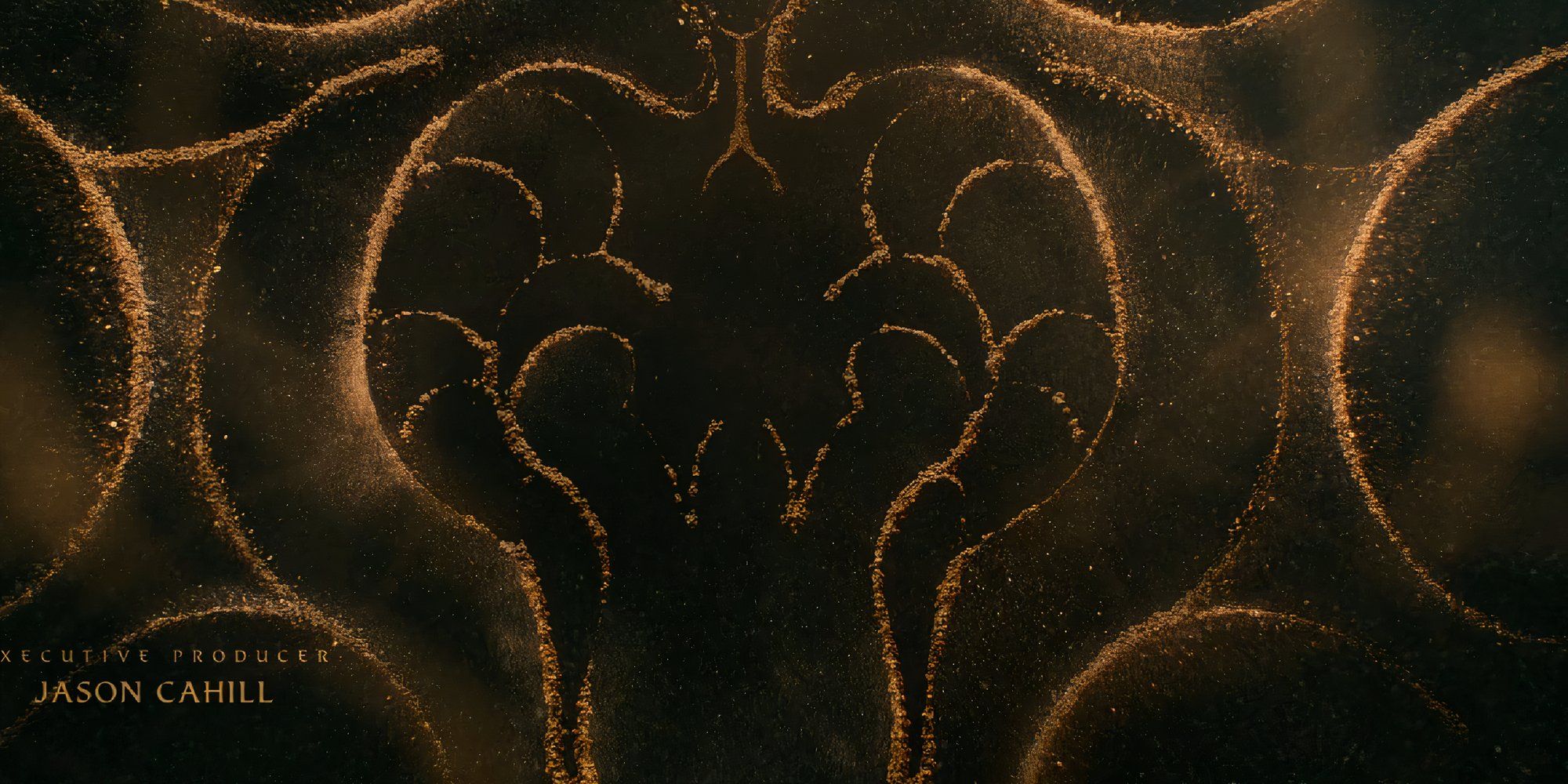
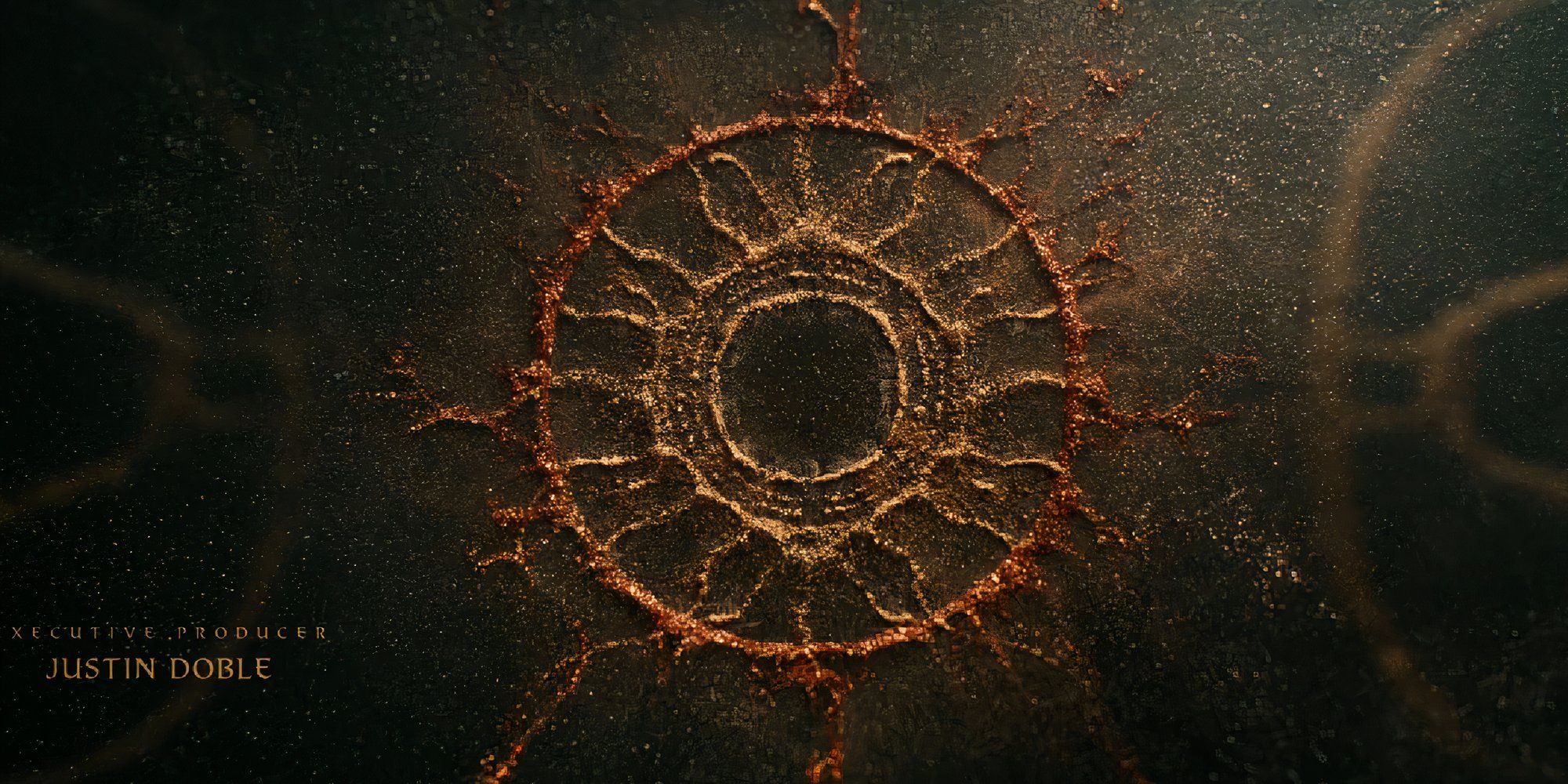





While the red sand in the Rings of Power season 2 title sequence initially takes on the random shapes typical of cymatics, it quickly begins to take new shape and change back to gold. While the images of season 1 subtly filled audiences in on the events of the First Age, from the destruction of the Two Trees of Valinor to the creation of the Silmarils, the reimaged sequence instead seems to foreshadow the events to come.
There are 19 circles total, one of each of the titular Rings of Power.
A Network of Circles – The first significant shape formed by the sand is a network of circles. These have the clearest meaning. There are 19 circles total, one of each of the titular Rings of Power. There is a group of three circles, connected to each other but not to the other 16, in the middle, and these are meant to represent the Three Elven Rings. Surrounding these are seven connected circles—the Seven given to the Dwarves. Finally, arched over the top is a network of nine circles, representing the Nine given to kings of Men.
A Crown Surrounded by Stars – After the undulating network of circles, the golden sand takes the shape of a crown surrounded by stars. This is a portion of the symbol for the Dwarf kingdom of Khazad-dûm.
An Elegant Arch – The next shape taken by the golden sand is an elegant arch, which looks exactly like the glowing Door of Durin seen in Peter Jackson’s Lord of the Rings trilogy. Since the glowing archway of the iconic Lord of the Rings door features the Khazad-dûm crown at the center, this shape is cohesive with the last.
A Balrog’s Horns – After another transition, the golden sand reforms into a far more alarming shape—the horns of a Balrog. While the beast’s head isn’t visible, the horns seen in the Rings of Power opening sequence are the exact shape of the Balrog seen in Rings of Power season 1, which follows the same design as Jackson’s Lord of the Rings movies.
A Red Iris – When the gold sand takes this next shape, that tinge of red again begins to take over. The circle that forms looks a great deal like a red iris, most likely symbolic of Sauron’s flaming eye.
When looking at all these shapes together, it’s clear a great deal of focus is being placed on the Dwarves of Khazad-dûm. The imagery for the Rings of Power season 2 title sequence hints that the tragedy of the ancient Dwarf city will be a special focus of this next installment, with Sauron’s gift to King Durin III leading to the doom of himself and his people as they uncover the monster that slumbers beneath them. Of course, this is only the beginning of the damage the Dark Lord’s titular Rings of Power will do.


